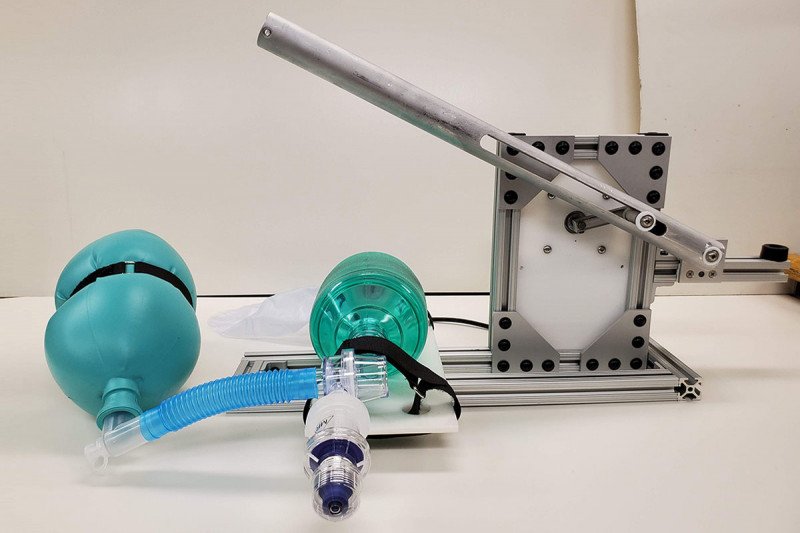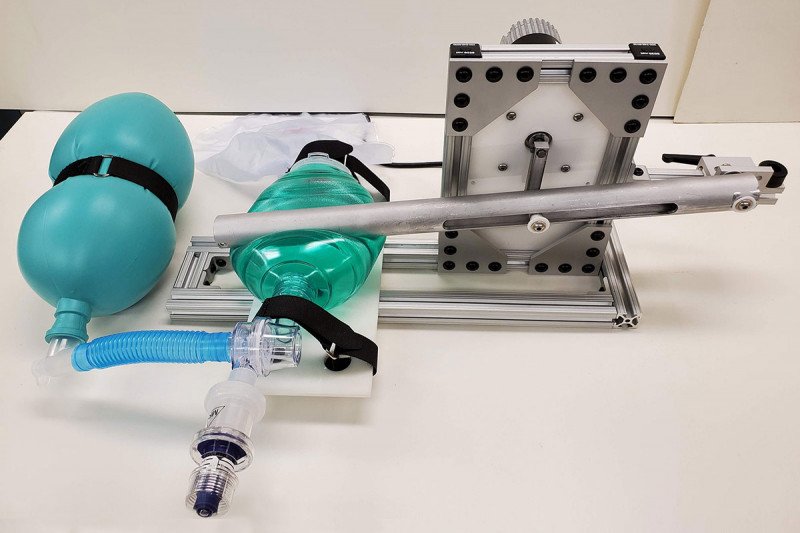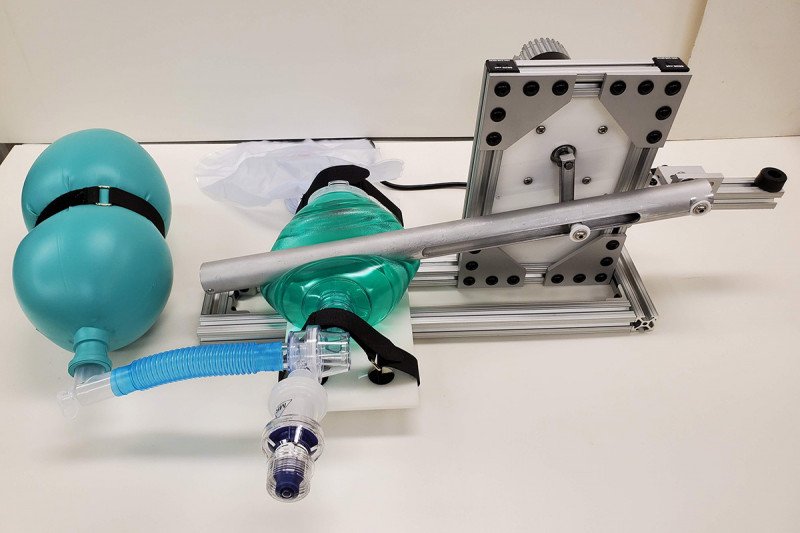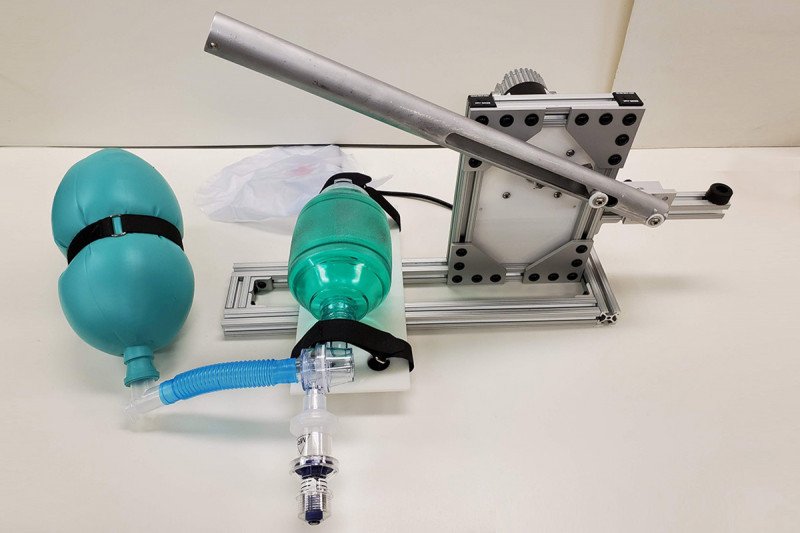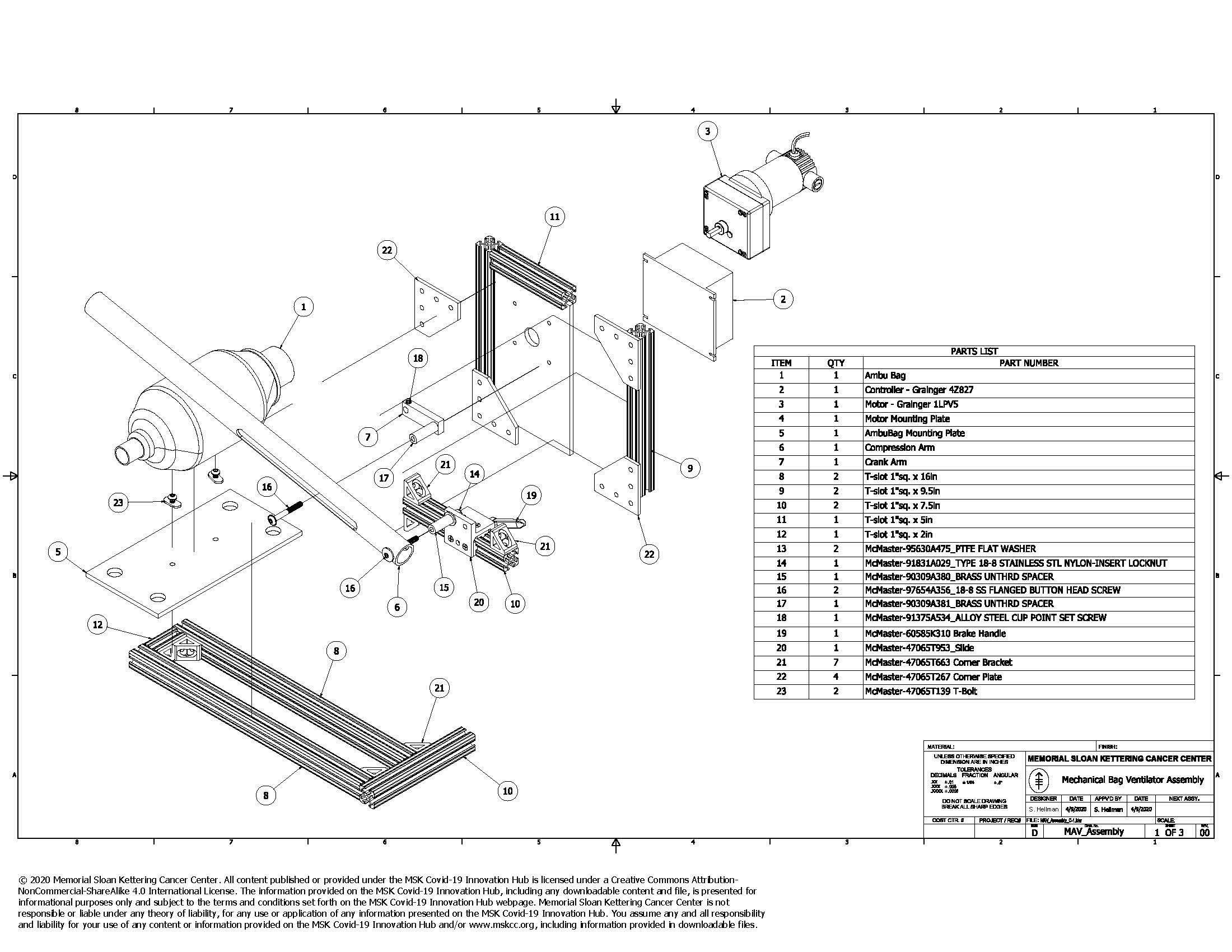Lead Contacts
Sam Hellman, PhD
Medical Physics
Memorial Sloan Kettering Cancer Center
Paul Booth, MS
Biomedical Engineering
Memorial Sloan Kettering Cancer Center
For more information contact
A multidisciplinary team at MSK has developed a “crisis” ventilator intended to provide lifesaving care when more sophisticated respiratory support equipment is unavailable. The device acts like a mechanical hand to physically ‘bag’ ventilate an intubated patient.
Built and tested over the past two weeks, the design, dubbed the ‘Crisis Vent’, is deliberately simple so that it can be easily and quickly constructed to facilitate rapid widespread adoption, while providing basic functionality and reliability.
The team, consisting of surgeons, biomedical engineers, respiratory therapists, anesthesiologists, and device development engineers, did not seek to recreate a traditional vent but rather to provide a bare minimum of functionality to maintain a patient when no other option exists. The design incorporates a self-refilling bag-valve-mask unit (e.g. an AMBU® bag), equipment that is likely available in the face of other current equipment shortages.
While it has not been used clinically on patients, the device has performed as designed on a test-lung in a simulated environment. Respiratory parameters such as tidal volume and pressure were measured and found suitable. It has also proven to be reliable and, to date, has withstood run-in tests lasting over 168 hours (7 days, or over 120,000 cycles) without failure.
While the concept for Crisis Vent was prompted by the current shortage of ventilators available within medical facilities in the U.S., we envisage an application in the global health system in emergency scenarios and in areas with chronic shortages of such lifesaving equipment.
How to Construct
The design criteria were as follows:
-
Physical/Environmental Requirements
- Small enough to be located near the patient (e.g. bedside table or Mayo stand) so that tube lengths are within acceptable limits
- Uses a single power outlet.
-
Clinical Requirements
- Variable respiratory rate - the rate is a function of the rotational speed of the motor.
- Variable tidal volume – adjusting the pivot point horizontally varies the stroke length of the compression arm
- Based on our design compromises, rate and pressure are linked due to the mechanical nature of the compression
- Inspiratory/expiratory (I/E) ratio set to 1:2 - calculating the optimum cam design to determine “breath flow profile” over a stroke. The I/E ratio can be altered by changing the height of the motor and pivot point in tandem
-
General Design Requirements
- Able to perform for days-long duration as the primary method of ventilation until a traditional ventilator becomes available
- Able to be sourced from inexpensive and readily available materials
- Minimal or no machining desired
- Minimal electronics
- Eliminates need for complex control systems to facilitate operation
- No programmable electronic elements facilitates the number of people who could make these
- For simplicity, a single unidirectional rotational motor is the only electrical component required.
- Simple speed control mechanism that only requires hookup.
- Minimal technical skill required to build
- Estimated at 1.5 hours per unit when materials acquired
- Infection Control
- Able to be wiped down
- Safety
- In the event of machine failure, the bag should be readily extractable to allow manual compression
Contributors
Sam Hellman, PhD – MSK Medical Physics
Robert J Downey, MD – MSK Thoracic Service, Department of Surgery
Paul Booth, MS – MSK Biomedical Engineering
Jud Ramaker, MD – MSK Volunteer Retired Technical Supervisor - Respiratory Care Service
Ryan Downs - MPR Associates Inc.
External links to other ideas
’Magvyerlator’ from Emerson Hospital YouTube Link 1
